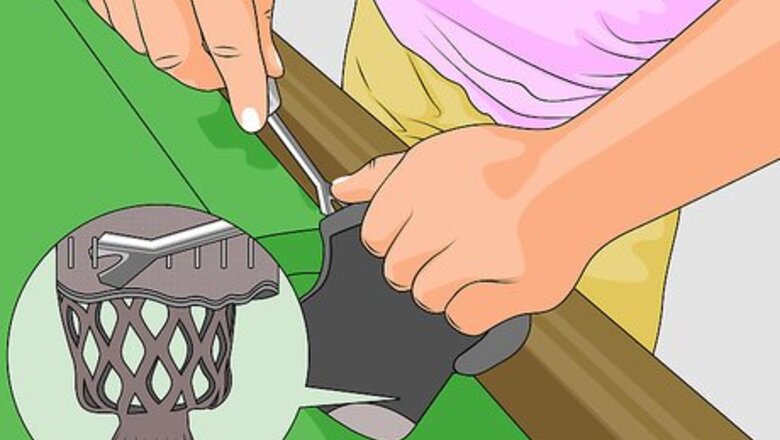
views
Standard Slate Table
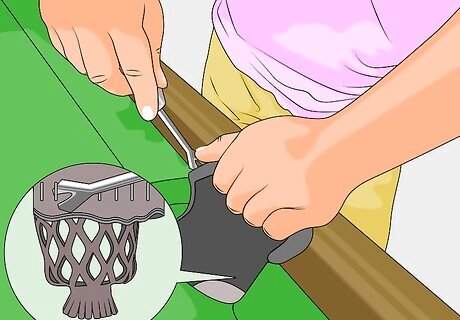
Detach the pockets from the table. Remove the pocket liners if present. Remove the screws or staples that attach the pocket straps to the table. If you don't have a staple remover, pry the staples out with a flathead screwdriver. Leave the pockets in place for now. This is usually easier from under the table. Wear goggles to protect against falling staples.
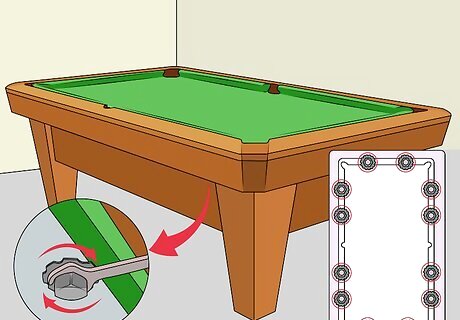
Remove the rail bolts underneath each rail. There are usually three or four bolts under each rail. Remove them with a socket wrench. Old pool tables may have special bolts with two holes. To remove these, order a forked tool from a pool table supply store.
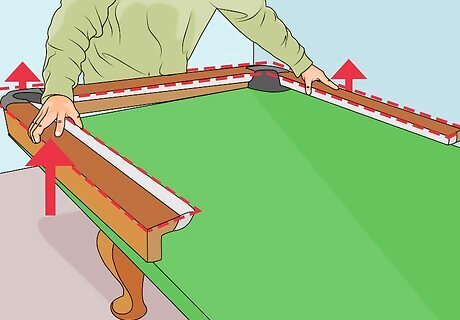
Remove the rails and pockets. Pull apart any rail sections that detach easily and set them aside. If two rails are attached at a corner, flip them over onto the table with another person's help, then pull apart the two sections. Set aside the pockets as well. Set the rails down carefully when flipping them, and take care to avoid bashing the side pockets.
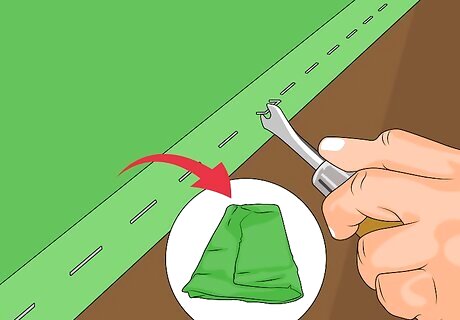
Detach the felt from the slate bed. The felt is usually either glued down or stapled to the wood backing of the slate. If it is stapled, remove each staple carefully to avoid tears. If glued, pull the edge of the felt backward very gently (never up or forward), working your way around the table. Once you've removed the felt, fold it carefully. To avoid wrinkles and creases, do not press the fold lines. If the felt is wearing out, consider tearing it off and installing new felt during reassembly.
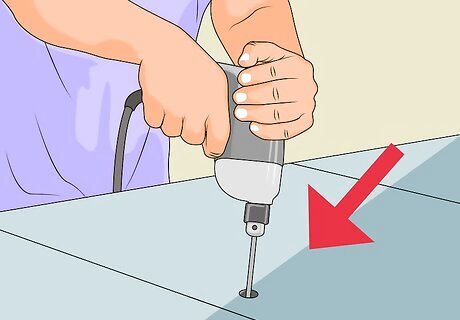
Remove the slate screws with a drill. These screws are usually at the corners of the table, but could be along the sides and center beam as well. If you find beeswax or putty over the screws, carefully scrape it off with a screwdriver to reveal the screw head without scratching the slate.
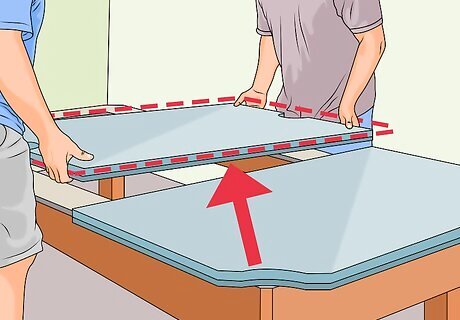
Lift each slate and place to the side. Most tables have a playing surface made from three slate slabs, and each one can weigh 250 lbs (110 kg). Get a couple friends to help out and move them as carefully as possible. A scratch or chip in one slate could ruin the table, requiring an expensive replacement for all three slates. One-piece slates can weigh up to 800 lbs (360 kg). Enlist several strong people to help you move these.
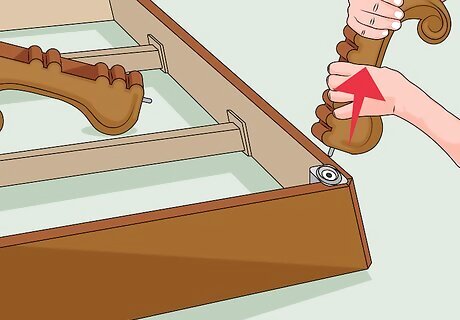
Disassemble the frame. Flip the table over and unbolt the legs. Take apart the final lightweight pieces, and you're ready to go.
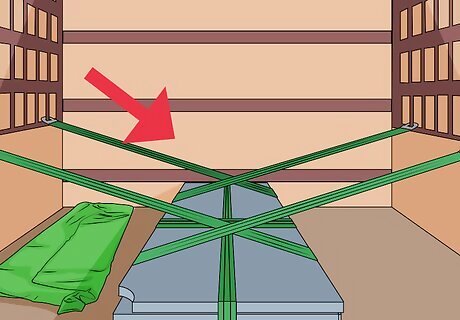
Transport the slate carefully. The most difficult part to transport is the slate tabletop, which is both heavy and fragile. Recruit several strong people to load the slate onto a furniture dolly, on its side. Fasten the slate in place tightly with a furniture strap. If transporting by truck, fasten the strap around the slate and onto the truck slats. If at all possible, load it into the truck using a liftgate. If you put the pool table in storage, choose a climate controlled storage unit, or a room with minimal variation in temperature and humidity. Lay the slate onto plastic sheeting, and tape more plastic sheeting over it. Store the carefully folded felt in a sealed plastic bag, and all other components in moving blankets or other protective materials.
Mechanized or Non-Slate Pool Table
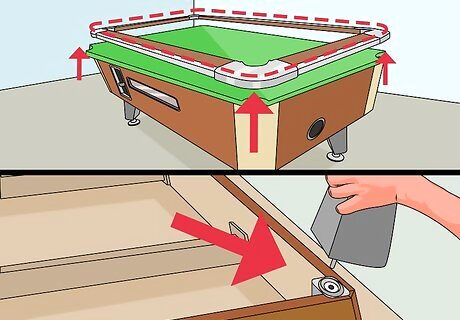
Remove only the rails and legs from a coin-operated table. Remove the rail bolts with a socket wrench and detach them from the table. If two lengths of rail are connected at a corner, you may need to flip them over before you detach them gently. Carefully flip the table over and unbolt the legs. Do not attempt to disassemble the rest of the table without professional help, since removing the coin-operated mechanism can make reassembly difficult or impossible. Some Valley Dynamo coin-operated tables have a metal trim covering the rail bolts. Remove the screws holding the trim in place, slide the trim toward the corner, then lift them up and out.
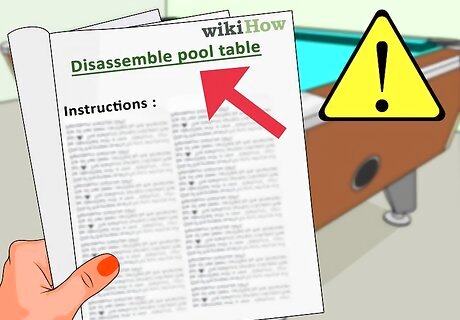
Use caution with ball return systems. Most tables with a ball return system are also coin-operated, but some tables from the 1970s or '80s have a simpler mechanism. In some models, removing the mechanism without damaging the table is difficult. Unless you have a manual for your model, leave the ball return mechanism attached during transport. You can usually disassemble the rest of the table as described in the standard slate table instructions.
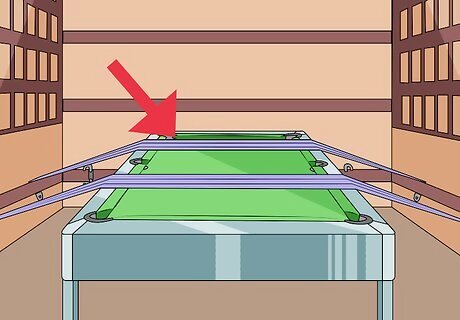
Transport non-slate tables in one piece. If your pool table surface is made from fiberboard (MDF), wood, or any other non-slate material, it is most likely a low-cost "disposable" table. These are not usually meant to be disassembled, not even by a professional. Transport the table in one piece. Some of these tables have folding legs to make transport easier.




















Comments
0 comment